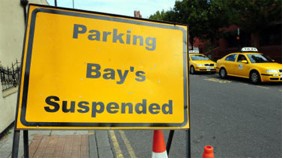|
English Language
|
The Apostrophe
 The
apostrophe referred to here is a punctuation mark in written English.
It originated as a mark to show that something was missing. This is the simple apostrophe of omission.
The
apostrophe referred to here is a punctuation mark in written English.
It originated as a mark to show that something was missing. This is the simple apostrophe of omission.
Confusion
arises because one of these omissions, that of the letter "e"
from the genitive -es ending in Old English, is now more likely to be
described as "possession" (belonging to). So though there is
a single origin there are now two main roles for the apostrophe.
The main rules governing the use of apostrophes in written English are basically
very simple.
Essentially there are two uses:
1. Omission.
They are used to denote a missing letter or letters, for example:
I can't instead of I cannot
I don't instead of I do not
it's instead of it is2. Possession.
They are used to denote possession, for example:
the dog's bone (the bone belonging to the dog)
the boy's book (the book belonging to the boy)
- And if there are two or more dogs, boys etc, the apostrophe comes after the 's':
the dogs' bones (the bones belonging to the dogs)
the boys' books (the books belonging to the boys)However, here are four additional notes:
A. The possessive form of 'it' does not take an apostrophe. So do use the apostrophe 'its' when you mean "it is" but use "its" (no apostrophe) for "belonging to it".
B. Do not use an apostrophe for the possessive pronouns eg ours, yours, his or hers
C. In the phrase "the dogs' bones" it is the number of dogs that is important, not the number of bones! So "the dog's bones" means the bones of one dog with several bones; "the dogs' bones" means several dogs with several bones. And yes, that does become confusing and unmemorable.
D. Although commonly seen, it is not necessary to use an apostrophe for plural acronyms. So CDs and DVDs but not CD's and DVD's.
Usage does seem to have changed in recent years on this issue, with examples from the 1950s (1950's !) showing much more use of the apostrophe after acronyms and numbers as well as using full stops after each individual letter in the acronym (M.O.T.). My view is to use apostrophes sparingly - so AVCs, MOTs and the 1970s rather than AVC's, MOT's and the 1970's.
A rare exception would be in a phrase such as "dotting the i's and crossing the t's" where the apostrophe is necessary for clarity
So the two simple uses become slightly qualified, which muddies the waters and makes teaching more difficult.
It's Also A Social Issue
Furthermore, as in some circles correct
use of the apostrophe is taken as a measure of literacy - or even intelligence
- its use has come to be a disproportionate irritation for both teachers
and students.
Also it has become a social issue, with errors placed on public display
to be scoffed at smugly by those who can use it properly.
The supporting argument is usually that the apostrophe gives us extra information (how many boys, how many dogs) which is important to us. In speech we usually have more context, while intonation and gesture help us fill in any linguistic gaps. In writing we have less information and punctuation seeks to tell us about pauses and to clarify sentence structure.
However it is quite rare for confusion in meaning to arise from a missing apostrophe. Ambiguity is more likely when an apostrophe is used in the wrong place rather than not at all. And note how the examples of incorrect usage are identified. If they are so obviously wrong, does that not suggest that the meaning was clear in the first place and therefore the apostrophe was redundant?
The present author experienced the frustration of unsuccessfully teaching use of the apostrophe to thousands of pupils and feels the time has come to abandon it entirely. Already large signs (City Drops Apostrophes!) and shop names have abandoned this irritating little mark. Contrived examples such as Fo'c'sle are largely redundant and there is a strong case for saying that we would not miss it if it disappeared.
Questions 1:
1:
Is this an informal sign, an abbreviation of BAY IS (apostrophe of omission), or an error using an apostrophe in a plural?
Does it matter?
Is anyone in any doubt about the basic fact that you can't park here for the time being?

In this extract from an auction website the writer is obviously confused by apostrophes.
The meaning is made more opaque by the use of the word "realised" which is ambiguous.
How many possible meanings can you find in this phrase? Or is it a sentence? Explain each meaning in other words.
What did the writer really mean?
Explain to the writer, as clearly as possible, why the punctuation is wrong here and how the phrase should be re-written.
Do the same with the following advertisement from a boating magazine.

And finally ...
- Read this poster found on the north Norfolk coast.
- How many inappropriate apostrophes can you you find?
- How many opportunities have been missed to add more inappropriate apostrophes?!
- Would you trust this printer to print your poster correctly?

By not using the apostrophe at all, perhaps we could actually increase clarity and remove one small source of annoyance for teachers of English. Discuss!
|
|